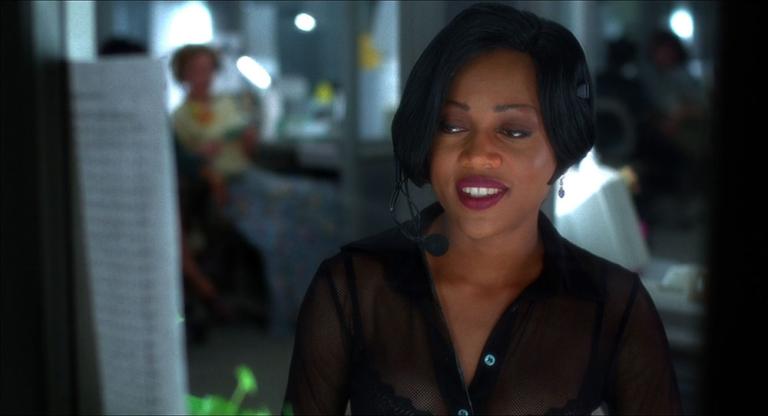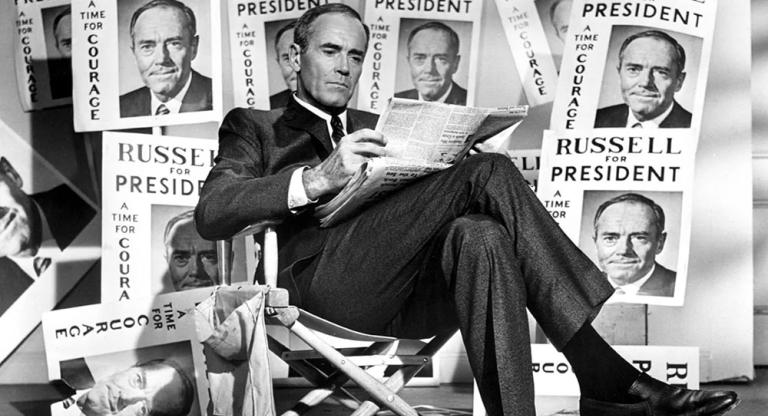Argentinian director Mariano Llinás has made a career out of taking modest budgets and mild subject matters and turning them into epic exercises in narrative teasing and turning. Between his first film Balnearos, a hodgepodge of tales centered around beaches and the risible mannerisms of ritualistic beach-goers, and his second Historias Extraordinarias, a four-hour long triptych of stories about men stumbling upon Rivettian conspiracies all told with voice-over in lieu of dialogue, Llinás is unrivaled in his pursuit of endless shaggy dog stories. Molding himself after sly tricksters and mad tinkerers of cinema — like Orson Welles in F For Fake mode — Llinás seems happiest when he’s playfully building up audience expectations and then pulling ironic reversals.
By far the grandest expression of this temperament, the 14-hour long, decade-in-the-making La Flor turns Llinás’s yarn-spinning into an Oulipo-style exercise in arbitrary rule-making reminiscent of Italo Calvino’s If On A Winter’s Night A Traveler. As laid out by the director himself from the comfort of a roadside picnic table in the film’s opening, La Flor operates on a strict set of structural parameters. For starters, the film consists of six episodes, each one in a different genre: a Val Lewton-esque B-Movie, a musical with a touch of mystery, a spy film, a remake of a French classic, a colonial western, and one that is unclassifiable. The first four episodes are all stories without endings, the fifth a complete tale, and the last episode has a middle and an ending but no beginning. All six star the same four actresses: Pilar Gamboa, Laura Paredes, Valeria Correa, and Elisa Carriacajo (who also happen to make up the Argentine theater troupe Piel De Lava).
More than a curious gimmick, this game of repeated rug-pulling allows the film to continually probe new narrative directions without ever needing to cut its fangs for some neat idea of artistic unity. In the mammoth six-hour long spy thriller that makes up episode three, the four actresses wait for the arrival of a hit-squad that the audience knows it’ll likely never see. Freed from sustaining tension, Llinás crafts the episode into something of an anti-suspense film filled with spies sitting around rolling cigarettes and endless forays into each character’s backstory and weird personal philosophies.
Eschewing apparent thematic or narrative connections across episodes, these tales are primarily linked through the role its four actresses play throughout the film. Claiming as his inspiration Ingrid Bergman’s sudden mid-career turn from Hollywood icon into an arthouse mainstay through her work with Roberto Rosselini, in La Flor Llinás attempts in a single 14-hour film what the Hollywood machine took decades to do — to carefully manufacture star personas only to continually modify and twist them to the audience’s delight. The roles and performances of the film’s stars don’t so much change from episode to episode, but deliberately warp themselves into a contorted reflection or negation of what’s come before. Withheld from the first episode until a late-narrative reveal, Pilar Gamboa is suddenly transformed into the star of episode two when she’s cheekily cast as a fiery diva revenging herself on her ex-lover/partner through pop-ballads, only to be thrust back into a more passive role as a mute Swiss spy in episode three.
Episodes three and four take this self-referential fascination with its performers to new extremes. Casting the four women as international spies who communicate predominantly in French, a language none of the actresses actually speak, episode three pushes the actresses away from the intense dramatic work of the previous two episodes and into terrain inherently more physical. These understated, subtle, and more focused performances offer new levels of familiarity at times withheld from the frenzy of narrative action in the first two stories. Episode four takes this familiarity and physicality to the extreme by at first casting the actresses as themselves and then writing them completely out of the picture until they pop back up unexpectedly during a short poetic rumination on performance, nature, and the documentary qualities of the moving image.
Coming at the culmination of the 2010s — a decade in many ways defined by the Disney Company’s gangsterish peddling of decadent franchise films that flaunt meaningful endings in order to perpetuate their earning potential — La Flor is a movie made for its time, even if it elides obvious contemporaneity. In defiance of those endless militaristic blockbusters which have been economically dominating cinema for years, Llinás crafts his modest exercise in narrative sleight of hand as a means of digging deeper into the roots of cinema, pushing at the medium’s dramatic and documentary potentials in order to find new approaches to its history as well as new paths into the future. The film’s ending is a testament to this — following episode five’s silent black-and-white remake of Jean Renoir’s A Day in The Country with a feverish story of stranded colonialists shot through the pre-cinema technology of a camera obscura. An antidote to today’s voguish corporate nostalgia, La Flor doesn’t fetishize the past, but acts as a reminder that yesterday’s ideas still contain infinite possibilities.
La Flor is streaming on Mubi or available to buy/rent from Grasshopper Film



